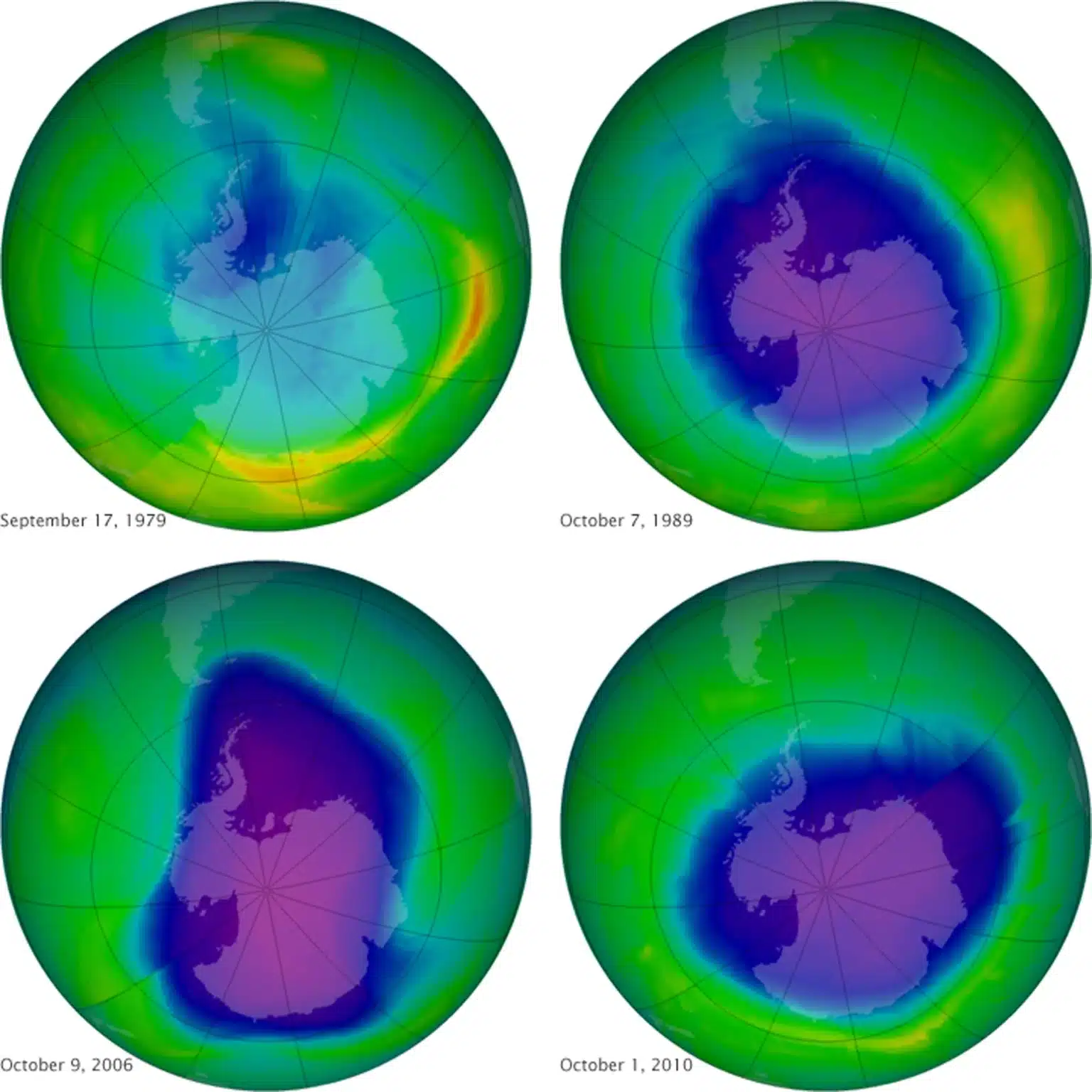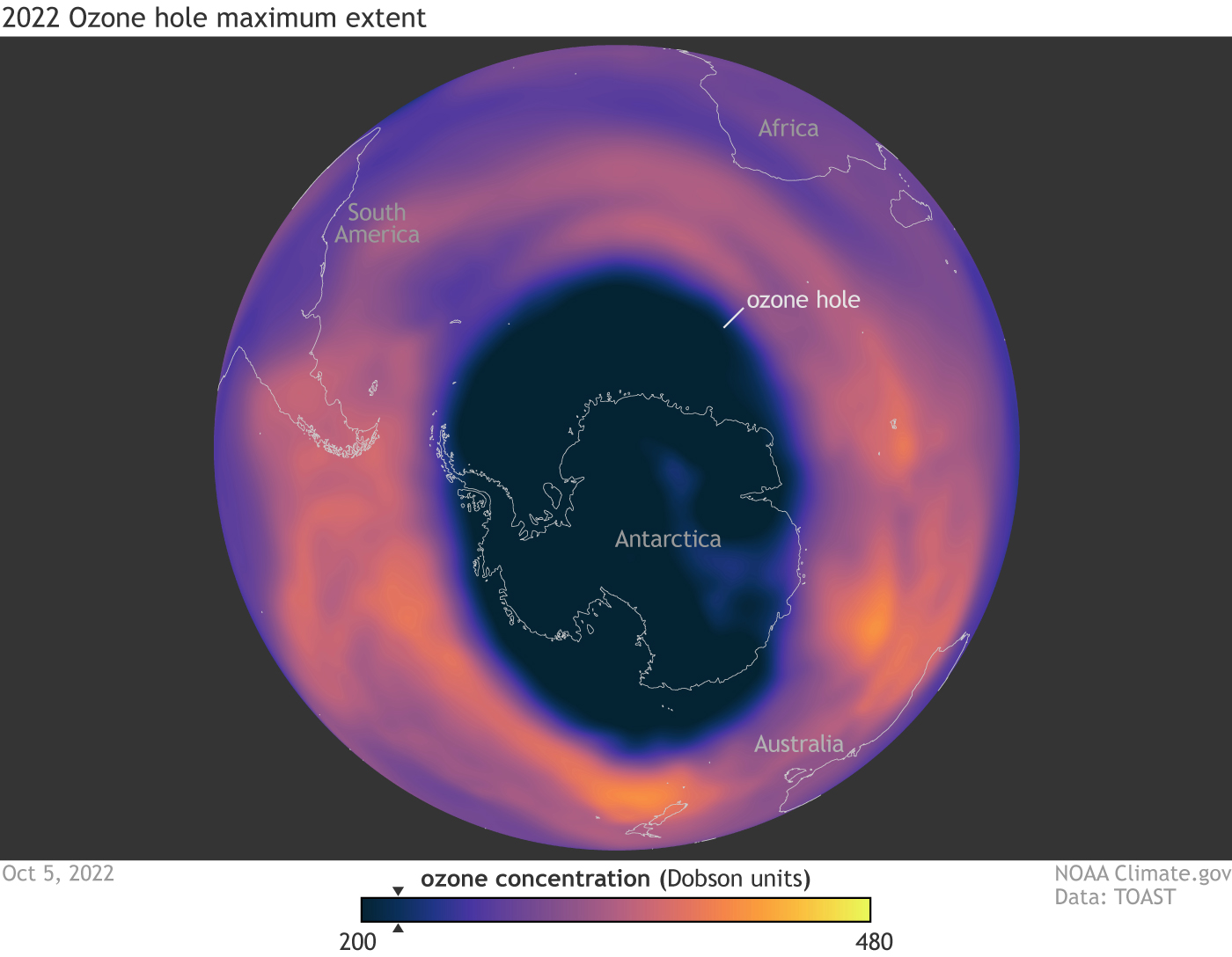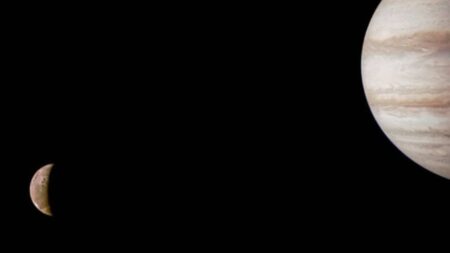Between September 7, 2022 and October, 2022, the depleted area of the south pole reached an average area of 23.2 million square kilometers.
Ozone layer is a region of Earth’s stratosphere which is responsible for absorption of sun’s radiation and because of the thinning of this layer, there is a reduced absorption of UV radiations, which creates an ozone hole every September above the South pole.
“Over time, steady progress is being made, and the hole is getting smaller,” said Paul Newman, chief scientist for Earth sciences at NASA’s Goddard Space Flight Center. “We see some wavering as weather changes and other factors make the numbers wiggle slightly from day to day and week to week. But overall, we see it decreasing through the past two decades. The elimination of ozone-depleting substances through the Montreal Protocol is shrinking the hole.”
In the 1980s after the Montreal Protocol was drafted, scientists and policy makers counted the amount of CFCs being utilized in industries and commercial products, they set limitations regarding its production and release, until recently, scientists have not been able to measure the extent of chlorine compounds released at places where they are present most. The reason they are unable to measure the severity of the layer is because of weather fluctuations. The thinning of the layer and the presence of stratospheric winds has made it spread across the stratosphere. They are invisible, but depletion has still occurred.
Why was ozone depletion longer and lasting over the years?
As ozone depletion is not a natural phenomenon, one of the major causes of depletion is the release of CFCs. Chlorofluorocarbons rises above the stratospheric layer where it combines with sunlight forming hydrochloric acid and other oxides of nitrogen. 1 molecule of chlorine has the capacity to destroy 1000 molecules of ozone. Over 300 million pounds of CFC 11 was released alone in the 1980s. As long as the weather of the Antarctic stratosphere is cold, the presence of polar vortex and O3 will persist.
Why Antarctica ?
These chemical reactions are unique in polar regions between their extreme low temperature and the presence of stratospheric clouds.
Methods used for measurement
NASA and NOAA researchers measured the size of the ozone layer with the help of satellite instruments like Aura, Suomi-NPP and NOAA-20 satellites.
Important factors about ozone layer this year
Two years before, researchers at the British Antarctic Survey yielded the “smoking gun plot” where they collected data about a chemical called chlorine monoxide increasing in the Antarctic Stratosphere, decreasing the number of ozone.
“It’s great to see this progress,” said Stephen Montzka, senior scientist for NOAA’s Global Monitoring Laboratory. “At the same time, it’s a bit humbling to realize that science is still a long way from being able to claim that the issue of depletion is behind us.”
SEE ALSO
https://www.cnet.com/science/mini-ozone-hole-opens-over-arctic-and-yes-thats-kinda-weird/














